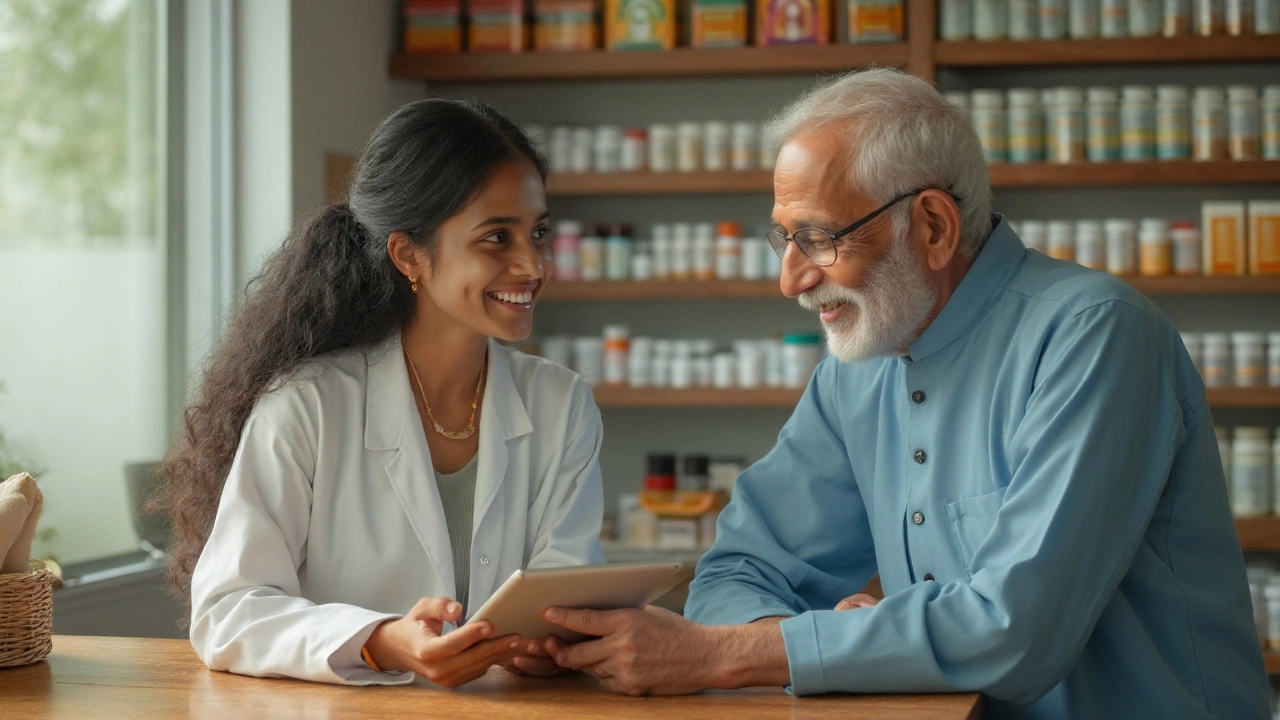Pharmacist‑Patient Communication: How to Build Trust Effectively
Learn practical ways pharmacists can improve communication with patients to boost trust, enhance adherence, and ensure safer medication outcomes.
Continue ReadingEver felt lost when a doctor uses big words or a food label looks like a code? You’re not alone. Health literacy is just the ability to get, understand, and use health info. It’s the difference between guessing and knowing what’s best for your body.
When you can read a prescription label correctly, you avoid missed doses and dangerous mix‑ups. Clear health knowledge also means you’re less likely to fall for false health myths that spread on social media. Hospitals report that patients with solid health literacy recover faster and need fewer follow‑up visits. So, sharpening this skill saves time, money, and even lives.
Think of health literacy as a toolbox. Every time you add a new tool—like understanding cholesterol numbers—you’re better equipped to fix a problem before it gets big. It also helps you ask the right questions during a doctor’s visit, which leads to more accurate diagnoses.
1. Start with the label. Pick any packaged food, find the “Nutrition Facts,” and ask: What’s the serving size? How much sugar or sodium am I actually eating? Write down the numbers and compare them to daily recommendations. This quick check turns a confusing box into useful data.
2. Use trusted sources. Government health sites, reputable hospitals, and well‑known health NGOs provide info that’s reviewed by experts. When you search a symptom, add “site:.gov” or “site:.org” to filter out unreliable pages.
3. Keep a health journal. Jot down medicines you take, dosage, and timing. Add any side effects you notice. Having this record handy makes doctor appointments smoother and helps you spot patterns you might otherwise miss.
4. Ask the "5 Ws" at the clinic. Who prescribed the medication? What is it for? When should you take it? Where do you store it? Why is this the best choice for you? Writing down the answers prevents confusion later.
5. Learn the language of common tests. Blood pressure, blood sugar, cholesterol—these numbers appear in routine check‑ups. Know the healthy ranges (e.g., fasting blood sugar 70‑99 mg/dL) so you can instantly tell if something needs attention.
6. Practice with apps. There are free apps that scan barcodes and break down nutritional info, or remind you to take meds. They’re like a pocket guide that grows with you.
Improving health literacy isn’t a one‑time project. It’s a habit of asking questions, checking facts, and using simple tools every day. Start small—pick one label this week, or write down one medication—then build from there. Before long, you’ll notice you’re making clearer choices, feeling more confident, and maybe even helping friends understand their health better.
Remember, you don’t need a medical degree to understand basic health info. With these practical steps, you can turn everyday moments into learning opportunities and keep your wellbeing on track.

Learn practical ways pharmacists can improve communication with patients to boost trust, enhance adherence, and ensure safer medication outcomes.
Continue Reading